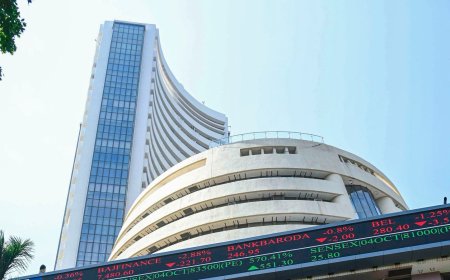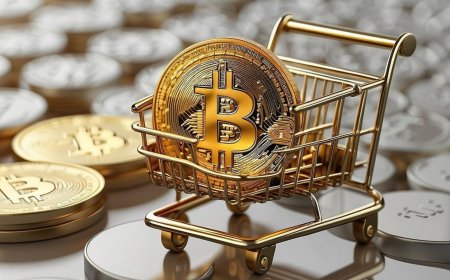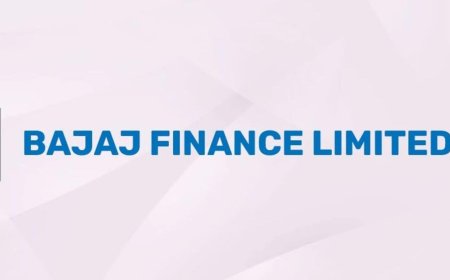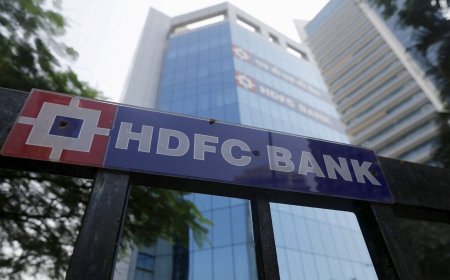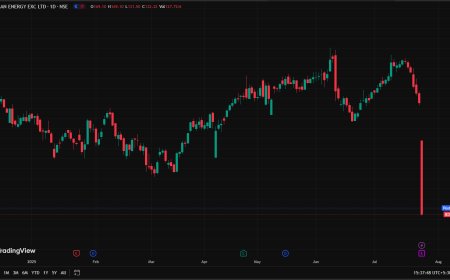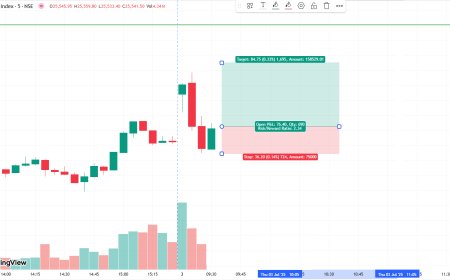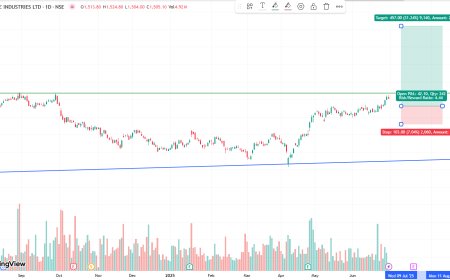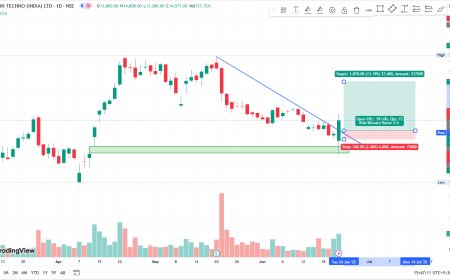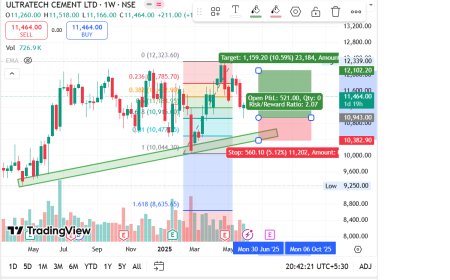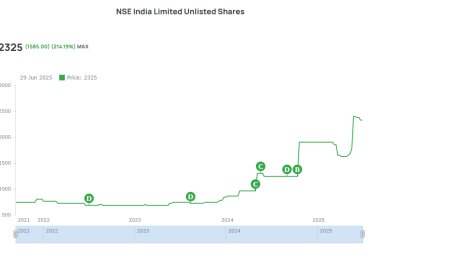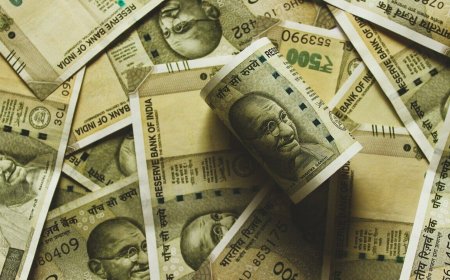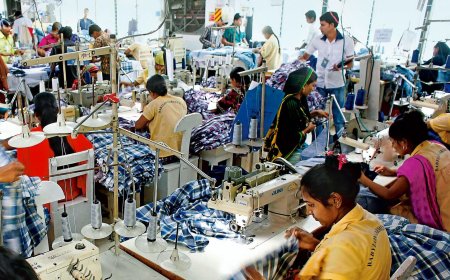India's Bank Credit Growth Slows to 9.8% in May 2025 from 19.5% YoY: SBI Report
India's bank credit growth has declined to 9.8% in May 2025, down from 19.5% last year, as per SBI. Learn how key sectors like retail, industry, and services performed.

Mumbai, May 31, 2025 — India's bank credit growth has sharply decelerated to 9.8% year-on-year in May 2025, down from 19.5% in the same month last year, according to the latest Ecowrap report released by the State Bank of India (SBI). The moderation has raised concerns among economists and investors, as it signals a slowdown in the economy's appetite for credit across key sectors.
The SBI report, which analyzes sector-wise bank credit trends using data from the Reserve Bank of India (RBI), indicates that while the base effect partly explains the dip, a combination of high interest rates, cautious lending, and subdued investment demand has played a significant role.
Key Highlights from the SBI Ecowrap Report
-
Overall Bank Credit Growth (YoY): Slowed to 9.8% in May 2025 from 19.5% in May 2024
-
Retail Credit Growth: Fell to 14.1% from 20.1% a year ago
-
Industrial Credit Growth: Dropped to 3.2% from 12.6%
-
Services Sector Credit: Declined to 11.5% from 21.0%
-
Agricultural Credit: Marginally improved to 7.3% from 6.9%
-
MSME Credit: Contracted slightly amid tightening collateral norms
Sector-Wise Credit Trends
Retail Credit: Still Resilient but Losing Steam
Retail credit—comprising housing loans, personal loans, and credit cards—remains the largest contributor to overall bank lending. However, growth has eased to 14.1%, suggesting a slowdown in consumer spending and borrowing behavior amid inflationary pressures and high EMIs.
“Retail credit has held up better than industrial or services credit, but the deceleration reflects caution on the part of households due to sustained high interest rates,” said Anusha Mehta, Chief Economist at Axis Research.
Industrial Sector: Investment Momentum Falters
Industrial credit, a key metric of private sector investment, has seen the most significant drop—from 12.6% to just 3.2%. The SBI report attributes this to low capacity utilization, high capital costs, and lingering global uncertainties affecting India’s manufacturing and infrastructure sectors.
“The weak industrial credit trend mirrors what we’re seeing in IIP and capex data. Private sector is deferring large investments,” noted Vikram Narayan, Senior Analyst at JM Financial.
Services Sector: Growth Halves
The services sector, which includes NBFCs, trade, tourism, and logistics, witnessed credit growth slip to 11.5%, from over 21% a year earlier. This is partly due to regulatory tightening for NBFCs, along with a more cautious outlook from banks.
Agriculture: A Bright Spot
Credit to agriculture has shown marginal improvement, moving up from 6.9% to 7.3%, helped by pre-monsoon disbursements and support from government credit guarantee schemes for small and marginal farmers.
Why Is Credit Growth Slowing?
Several macroeconomic and cyclical factors are contributing to the visible credit slowdown:
-
Tight Monetary Policy: The RBI has kept the repo rate unchanged at 6.50% since February 2023, following a cumulative hike of 250 basis points in the previous cycle.
-
Weaker Demand from Industry: Corporate India remains wary of fresh capex due to volatile input costs and uncertain global demand.
-
Base Effect: The same period last year witnessed an abnormally high growth rate, creating a statistical illusion of sharper decline now.
-
Bank Lending Caution: Concerns around asset quality and rising NPAs, especially in MSMEs and unsecured loans, have made banks more selective.
Analysts’ Take: Temporary Dip or Structural Concern?
While the decline has raised eyebrows, some experts believe it may be a transient phase rather than a long-term structural concern.
“We expect credit growth to pick up in H2 FY26 as interest rates ease and private capex resumes,” said Praveen Shah, Economist at Kotak Institutional Equities. “The banking sector remains well-capitalized and risk-averse, which is good for long-term stability.”
However, others urge caution.
“If credit to the productive sectors like industry and MSMEs continues to languish, it may dampen economic momentum,” warned Devika Rao, Economic Affairs Editor at Financial Daily.
Market Context: RBI, Bonds, and Inflation
The RBI is widely expected to start cutting interest rates by Q3 2025, if inflation remains within its 4% target range. Headline inflation in April stood at 4.6%, and core inflation continues to ease.
Bond yields have softened slightly in anticipation of monetary easing. The 10-year government bond yield is hovering near 6.88%, down from 7.10% in March.
The corporate bond market has also seen muted activity, consistent with lower institutional borrowing demand.
Investor Outlook: What This Means for Markets and Banks
For investors, the dip in credit growth may signal a temporary soft patch in India’s growth story. However, it also presents opportunities:
-
Banking Stocks: May face near-term pressure due to lower credit offtake, especially for lenders heavily reliant on corporate and unsecured retail credit.
-
NBFCs: Could be adversely impacted by tighter credit access and higher borrowing costs.
-
Consumer Durables and Real Estate: May see subdued demand linked to lower retail loan disbursements.
On the positive side, rate-sensitive sectors like autos, housing, and infrastructure could benefit from an anticipated rate cut cycle.
Conclusion
The deceleration in bank credit growth to 9.8% is a clear indicator of cooling economic activity, at least in the short term. While agriculture and retail lending offer pockets of resilience, the drag from industrial and services credit poses a challenge for sustained recovery.
Policymakers and investors will closely watch upcoming RBI policy statements, fiscal announcements, and credit demand trends to gauge whether this is a cyclical dip or the beginning of a more persistent slowdown.
What's Your Reaction?
 Like
0
Like
0
 Dislike
0
Dislike
0
 Love
0
Love
0
 Funny
0
Funny
0
 Angry
0
Angry
0
 Sad
0
Sad
0
 Wow
0
Wow
0




